Characterization and Prediction of the Gas Hydrate Reservoir at the Second Offshore Gas Production Test Site in the Eastern Nankai Trough, Japan
Abstract
:1. Introduction
2. Geological Setting and Reservoir Architecture in the Second Offshore Production Test Site
3. Site Screening Process to Narrow Down the Candidate Location
4. Well Log Observations and the Internal Reservoir Heterogeneity
4.1. Formation Evaluation of Geological Survey Well and Selection of the Candidate Site
4.2. NGH Reservoir Heterogeneity Within the MHCZ
5. Method for the Understanding the Spatial Distribution of the NGH-Bearing Sediments
6. Results of Integration of the Well Log and Seismic Data
6.1. Reservoir Quality for the Upper Unit
6.2. Reservoir Quality for the Lower Unit
7. Discussion and the Way Forward
Acknowledgments
Author Contributions
Conflicts of Interest
References
- Yamamoto, K.; Terao, Y.; Fujii, T.; Ikawa, T.; Seki, M.; Matsuzawa, M.; Kanno, T. Operational overview of the first offshore production test of methane hydrates in the Eastern Nankai Trough. In Proceedings of the Offshore Technology Conference, Huston, TX, USA, 5–8 May 2014. [Google Scholar]
- Matsuzawa, M.; Terao, Y.; Hay, W.J.; Wingstrom, L.; Duncan, M.W.; Ayling, I. A completion system application for the world’s first marine methane hydrate production test. In Proceedings of the Offshore Technology Conference, Huston, TX, USA, 5–8 May 2014. [Google Scholar]
- Yamamoto, K.; Kanno, T.; Wang, X.X.; Tamaki, M.; Fujii, T.; Chee, S.S.; Wang, X.W.; Pimenov, V.; Shako, V. Thermal Responses of a Gas Hydrate-bearing Sediment to a Depressurization Operation. RSC Adv. 2017, 7, 5554–5577. [Google Scholar] [CrossRef]
- Konno, Y.; Fujii, T.; Sato, A.; Akamine, K.; Naiki, M.; Masuda, Y.; Yamamoto, K.; Nagao, J. Key Findings of the World’s First Offshore Methane Hydrate Production Test off the Coast of Japan: Toward Future Commercial Production. Energy Fuels 2017, 31, 2607–2616. [Google Scholar] [CrossRef]
- Yamamoto, K.; Nakatsuka, Y. Planning and progress of the second offshore production Test. In JOGMEC Oil and Gas Technical Activity Report, 1st ed.; The Oil & Gas Upstream Technology Unit, Japan Oil, Gas and Metals National Corporation, Ed.; JOGMEC: Chiba, Japan, 2016; pp. 91–93. [Google Scholar]
- Fujii, T.; Suzuki, K.; Tamaki, M.; Takayama, T.; Suzuki, S. The selection of the candidate location for the second offshore methane hydrate production test and geological findings from the pre-drilling operation, in the eastern Nankai Trough, Japan. In Proceedings of the 9th International Conference on Gas Hydrates, Denver, CO, USA, 25–30 June 2017. [Google Scholar]
- Suzuki, K.; Takayama, T.; Tamaki, M.; Fujii, T. Lithological interpretation for constructing the geological model around wells for the 2nd offshore gas-production test from gas hydrate on the Daini-Atsumi knoll in eastern Nankai Trough area. In Proceedings of the 9th International Conference on Gas Hydrates, Denver, CO, USA, 25–30 June 2017. [Google Scholar]
- Tamaki, M.; Fujii, T.; Suzuki, K.; Takayama, T. Integrated reservoir characterization and 3D geological modeling for the gas hydrate potential evaluation at the 2nd offshore production test site in the eastern Nankai Trough, Japan. In Proceedings of the 9th International Conference on Gas Hydrates, Denver, CO, USA, 25–30 June 2017. [Google Scholar]
- Tamaki, M.; Suzuki, K.; Fujii, T.; Sato, A. Prediction and Validation of Gas Hydrate Saturation Distribution in the Eastern Nankai Trough, Japan: Geostatistical Approach Integrating Well-log and 3D Seismic Data. Interpretation 2016, 4, SA83–SA94. [Google Scholar] [CrossRef]
- Noguchi, S.; Shimoda, N.; Takano, O.; Oikawa, N.; Inamori, T.; Saeki, T.; Fujii, T. 3-D internal Architecture of Methane Hydrate-bearing Turbidite Channels in the Eastern Nankai Trough, Japan. Mar. Pet. Geol. 2011, 28, 1817–1828. [Google Scholar] [CrossRef]
- Takano, O.; Itoh, Y.; Kusumoto, S. Variation in forearc basin configuration and basin-filling depositional systems as a function of trench slope break development and strike-slip movement: Examples from the Cenozoic Ishikari-Sanriku-Oki and Tokai-Oki-Kumano-Nada forearc basins, Japan. In Mechanism of Sedimentary Basin Formation: Multidisciplinary Approach on Active Plate Margins, 1st ed.; Itoh, Y., Ed.; InTech: Rijeka, Croatia, 2013; pp. 3–25. ISBN 978-953-51-1193-1. [Google Scholar]
- Tsuji, Y.; Ishida, H.; Nakamizu, M.; Matsumoto, R.; Shimizu, S. Overview of the METI Nankai Trough Wells: A Milestone in the Evaluation of Methane Hydrate Resources. Resour. Geol. 2004, 54, 3–10. [Google Scholar] [CrossRef]
- Tsuji, Y.; Fujii, T.; Hayashi, M.; Kitamura, R.; Nakamizu, M.; Ohbi, K.; Saeki, T.; Yamamoto, K.; Namikawa, T.; Inamori, T.; et al. Methane-hydrate occurrence and distribution in the eastern Nankai Trough, Japan: Findings of the Tokai-oki to Kumano-nada methane-hydrate drilling program. In Natural Gas Hydrates—Energy Resource Potential and Associated Hazards, 1st ed.; Collett, T., Johnson, A., Knapp, C., Boswell, R., Eds.; AAPG Memoir: Tulsa, OK, USA, 2009; Volume 89, pp. 228–246. [Google Scholar]
- Uchida, T.; Lu, H.; Tomaru, H. Subsurface Occurrence of Natural Gas Hydrate in the Nankai Trough Area: Implication for Gas Hydrate Concentration. Resour. Geol. 2004, 54, 35–44. [Google Scholar] [CrossRef]
- Saeki, T.; Fujii, T.; Inamori, T.; Kobayashi, T.; Hayashi, M.; Nagakubo, S.; Takano, O. Extraction of methane hydrate concentrated zone for resource assessment in the eastern Nankai Trough, Japan. In Proceedings of the Offshore Technology Conference, Huston, TX, USA, 5–8 May 2008. [Google Scholar]
- Fujii, T.; Suzuki, K.; Takayama, T.; Tamaki, M.; Komatsu, Y.; Konno, Y.; Yoneda, J.; Yamamoto, K.; Nagao, J. Geological Setting and Characterization of a Methane Hydrate Reservoir Distributed at the First Offshore Production Test Site on the Daini-Atsumi Knoll in the Eastern Nankai Trough, Japan. Mar. Pet. Geol. 2015, 66, 310–322. [Google Scholar] [CrossRef]
- Boswell, R.; Shipp, C.; Reichel, T.; Shelander, D.; Saeki, T.; Frye, M.; Shedd, W.; Collett, T.; McConnell, R. Prospecting for Marine Gas Hydrate Resources. Interpretation 2016, 4, SA13–SA24. [Google Scholar] [CrossRef]
- Lee, M.; Collett, T.; Inks, T. Seismic-attribute analysis for gas-hydrate and free-gas prospects on the North Slope of Alaska. In Natural Gas Hydrates—Energy Resource Potential and Associated Hazards, 1st ed.; Collett, T., Johnson, A., Knapp, C., Boswell, R., Eds.; AAPG Memoir: Tulsa, OK, USA, 2009; Volume 89, pp. 541–554. [Google Scholar]
- Inks, T.; Lee, M.; Agena, W.; Taylor, D.; Collett, T.; Hunter, T.; Zyrianova, M. Seismic prospecting for gas hydrate and associated free gas prospects in the Milne Point area of northern Alaska. In Natural Gas Hydrates—Energy Resource Potential and Associated Hazards, 1st ed.; Collett, T., Johnson, A., Knapp, C., Boswell, R., Eds.; AAPG Memoir: Tulsa, OK, USA, 2009; Volume 89, pp. 555–583. [Google Scholar]
- Dai, J.; Xu, H.; Snyder, F.; Dutta, N. Detection and Estimation of Gas Hydrates Using Rock Physics and Seismic Inversion: Examples from the Northern Deepwater Gulf of Mexico. Lead. Edge 2004, 23, 60–66. [Google Scholar] [CrossRef]
- Shelander, D.; Dai, J.; Bunge, G.; Singh, S.; Eissa, M.; Fisher, K. Estimating Saturation of Gas Hydrates Using Conventional 3D data, Gulf of Mexico Joint Industry Project Leg II. Mar. Pet. Geol. 2012, 34, 96–110. [Google Scholar] [CrossRef]
- Rajput, S.; Thakur, N.K. Rock properties. In Geological Controls for Gas Hydrates and Unconventionals, 1st ed.; Elsevier: Amsterdam, The Netherlands, 2016; pp. 131–164. ISBN 978-0-12-802020-3. [Google Scholar]
- Noguchi, S.; Furukawa, T.; Aung, T.T.; Oikawa, N. Reservoir architecture of methane hydrate bearing turbidite channels in the eastern Nankai Trough, Japan. In Proceedings of the 7th International Conference on Gas Hydrates, Edinburgh, UK, 17–21 July 2011. [Google Scholar]
- Barclay, F.; Bruun, A.; Rasmussen, K.B.; Alfaro, J.C.; Cooke, A.; Cooke, D.; Salter, D.; Godfrey, R.; Lowden, D.; McHugo, S.; et al. Seismic Inversion: Reading between the Lines. Oilfield Rev. 2008, 20, 42–63. [Google Scholar]
- Latimer, R.B.; Davison, R.; van Riel, P. An Interpreter’s Guide to Understanding and Working with Seismic-derived Acoustic Impedance Data. Lead. Edge 2000, 19, 242–256. [Google Scholar] [CrossRef]
- Fujii, T.; Aung, T.T.; Wada, N.; Komatsu, Y.; Suzuki, K.; Ukita, T.; Wygrala, B.; Fuchs, T.; Rottke, W.; Egawa, K. Modeling Gas Hydrate Petroleum Systems of the Pleistocene Turbiditic Sedimentary Sequences of the Daini-Atsumi Area, Eastern Nankai Trough, Japan. Interpretation 2016, 4, SA95–SA111. [Google Scholar] [CrossRef]
- Foucher, J.P.; Nouzé, H.; Henry, P. Observation and Tentative Interpretation of a Double BSR on the Nankai Slope. Mar. Geol. 2002, 187, 161–175. [Google Scholar] [CrossRef]
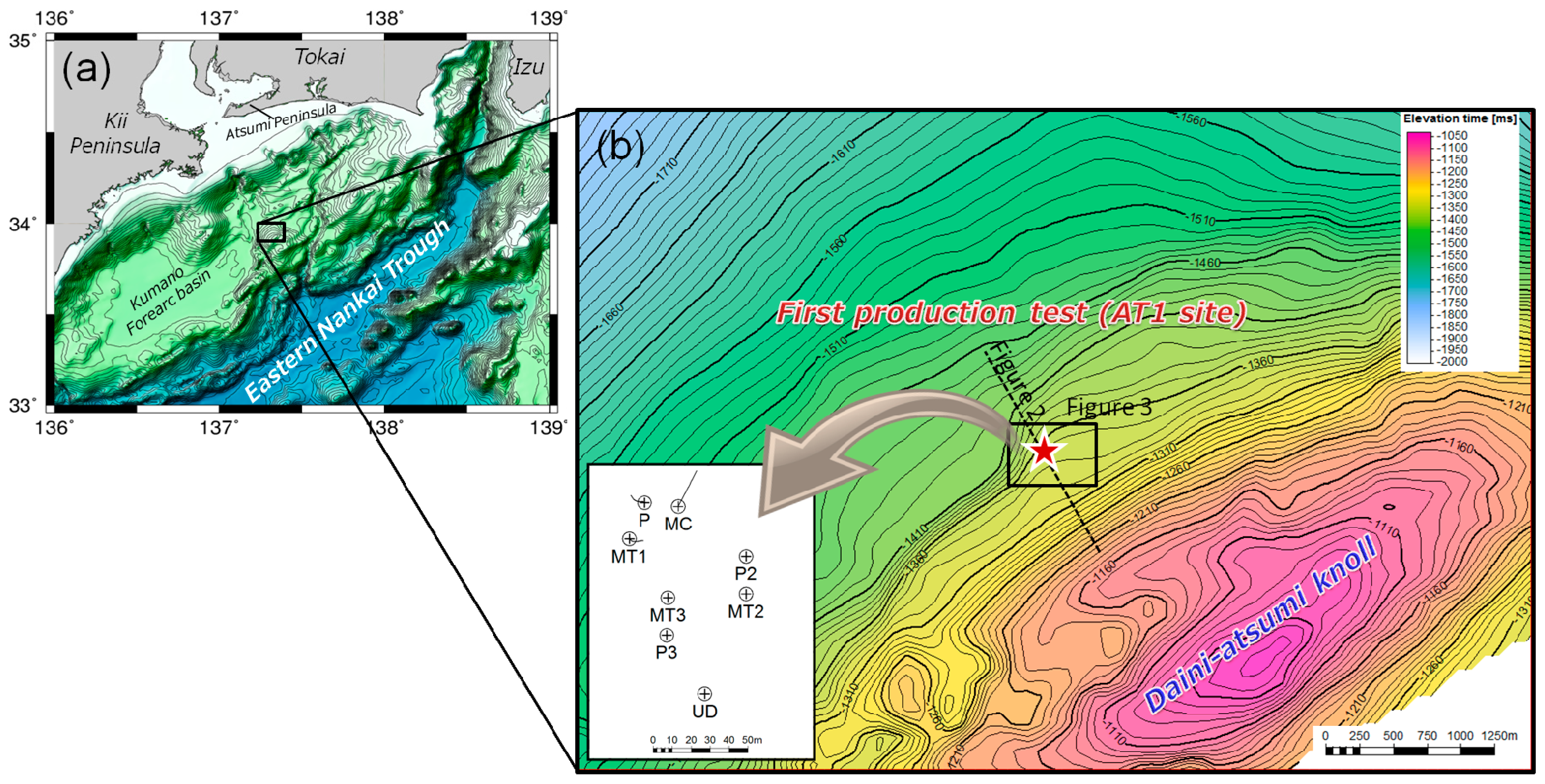
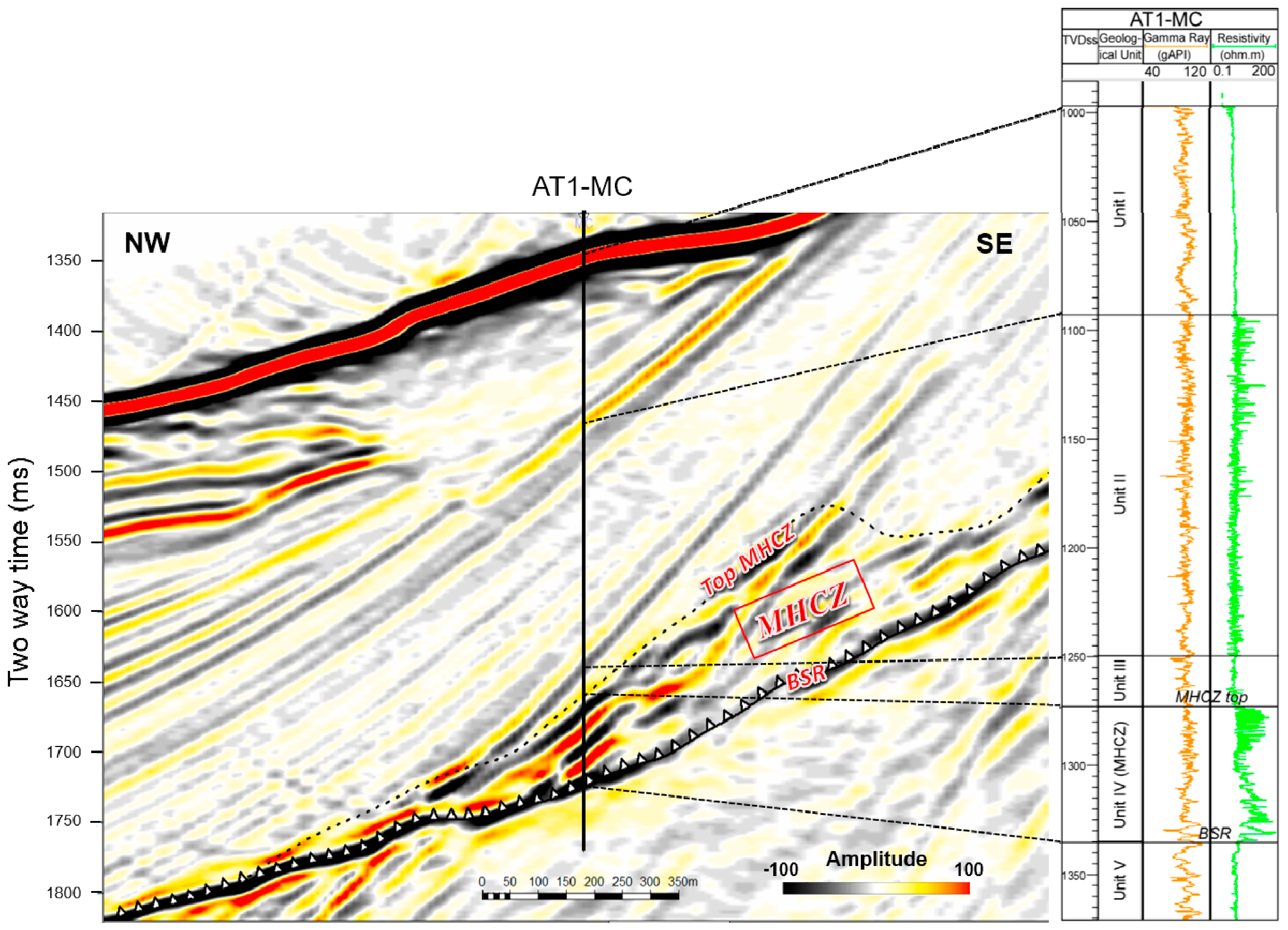
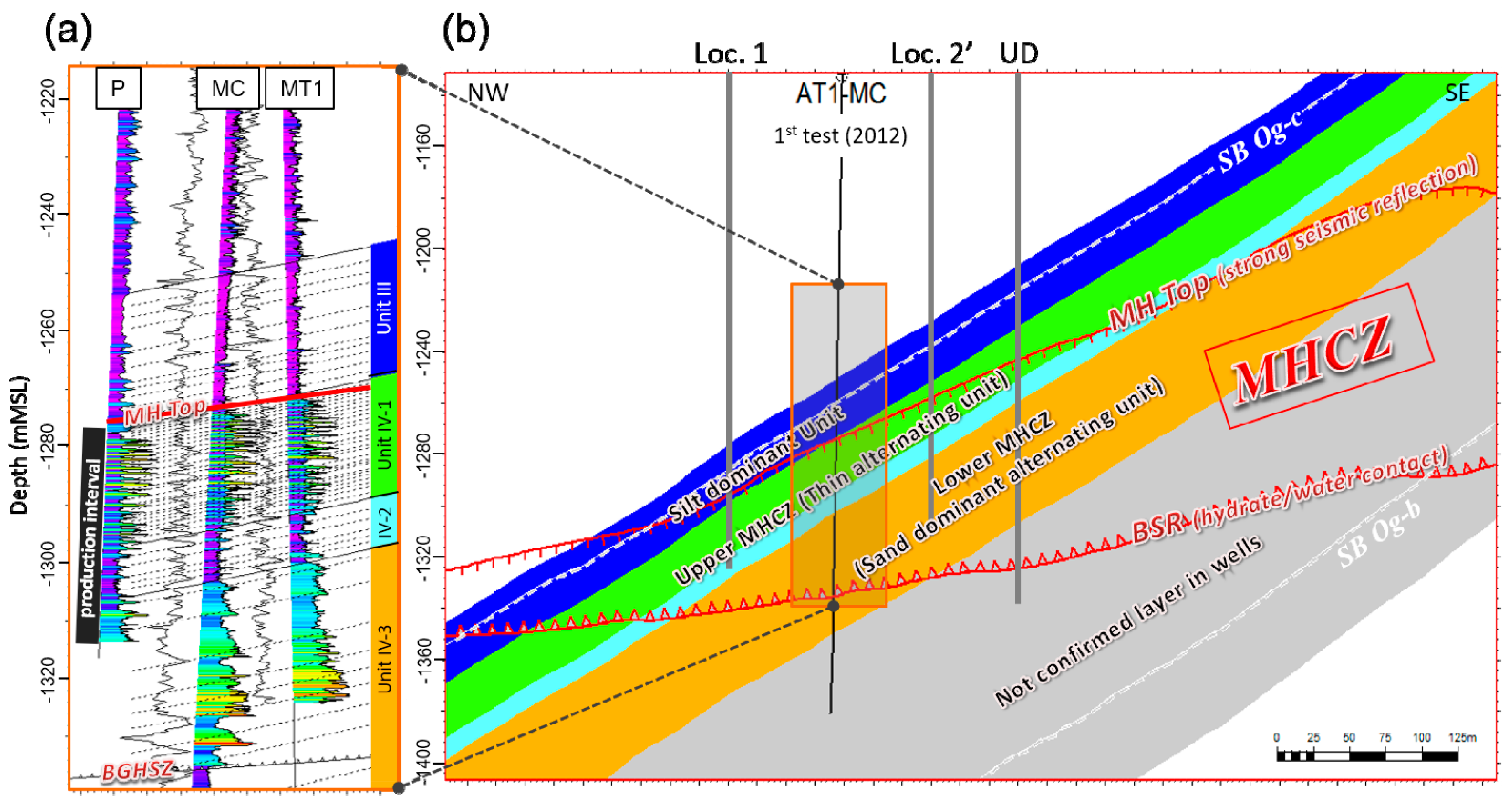
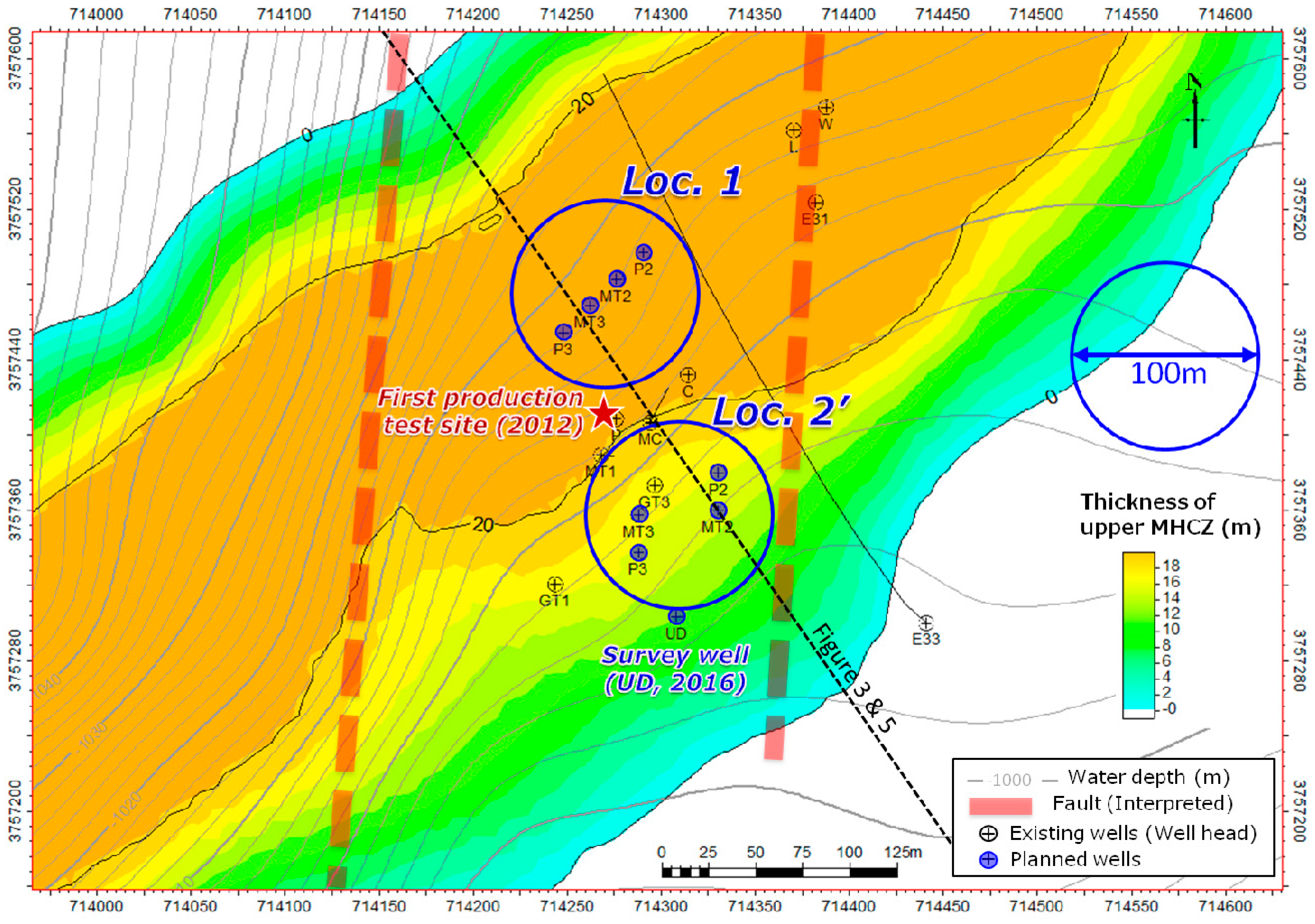


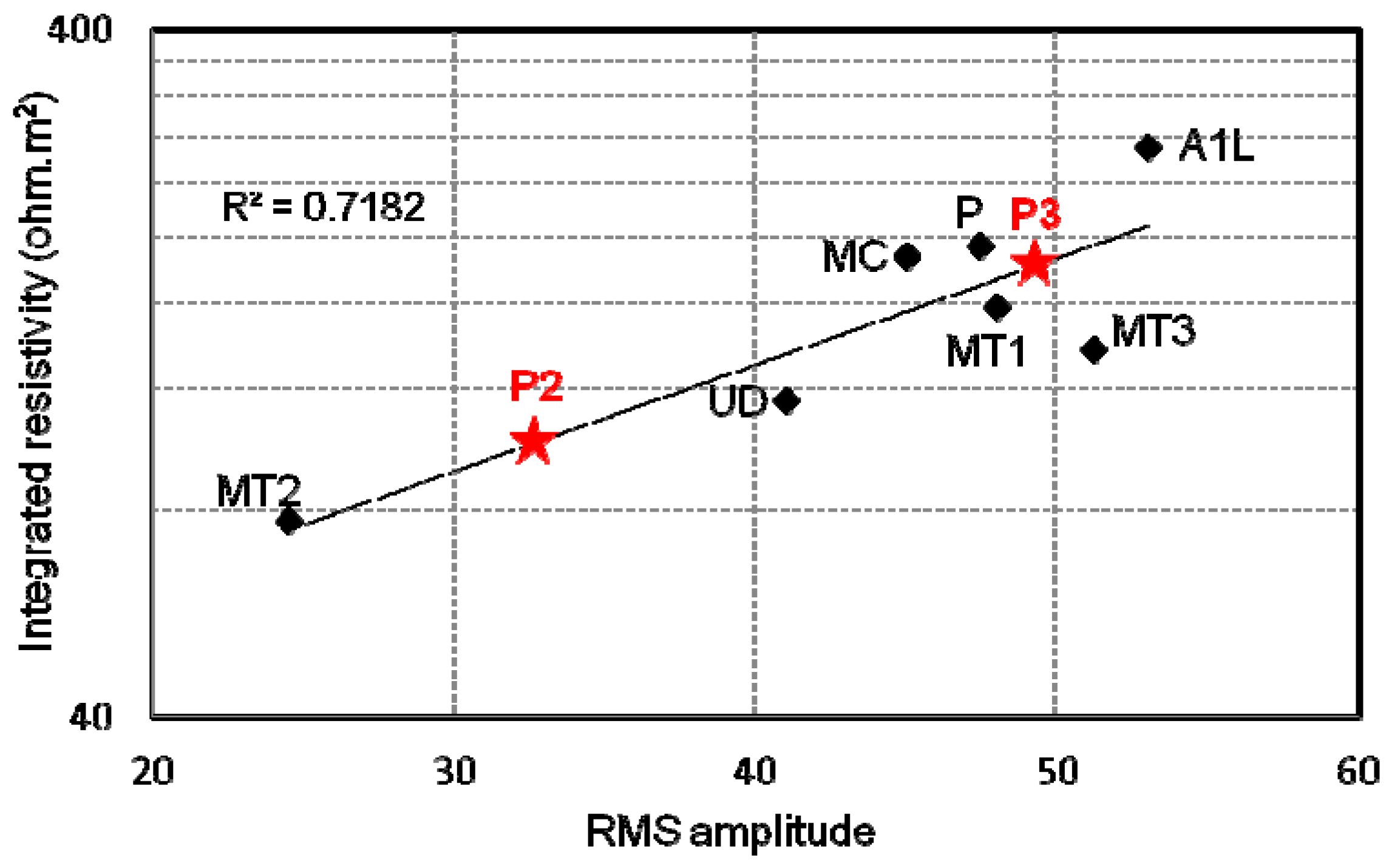
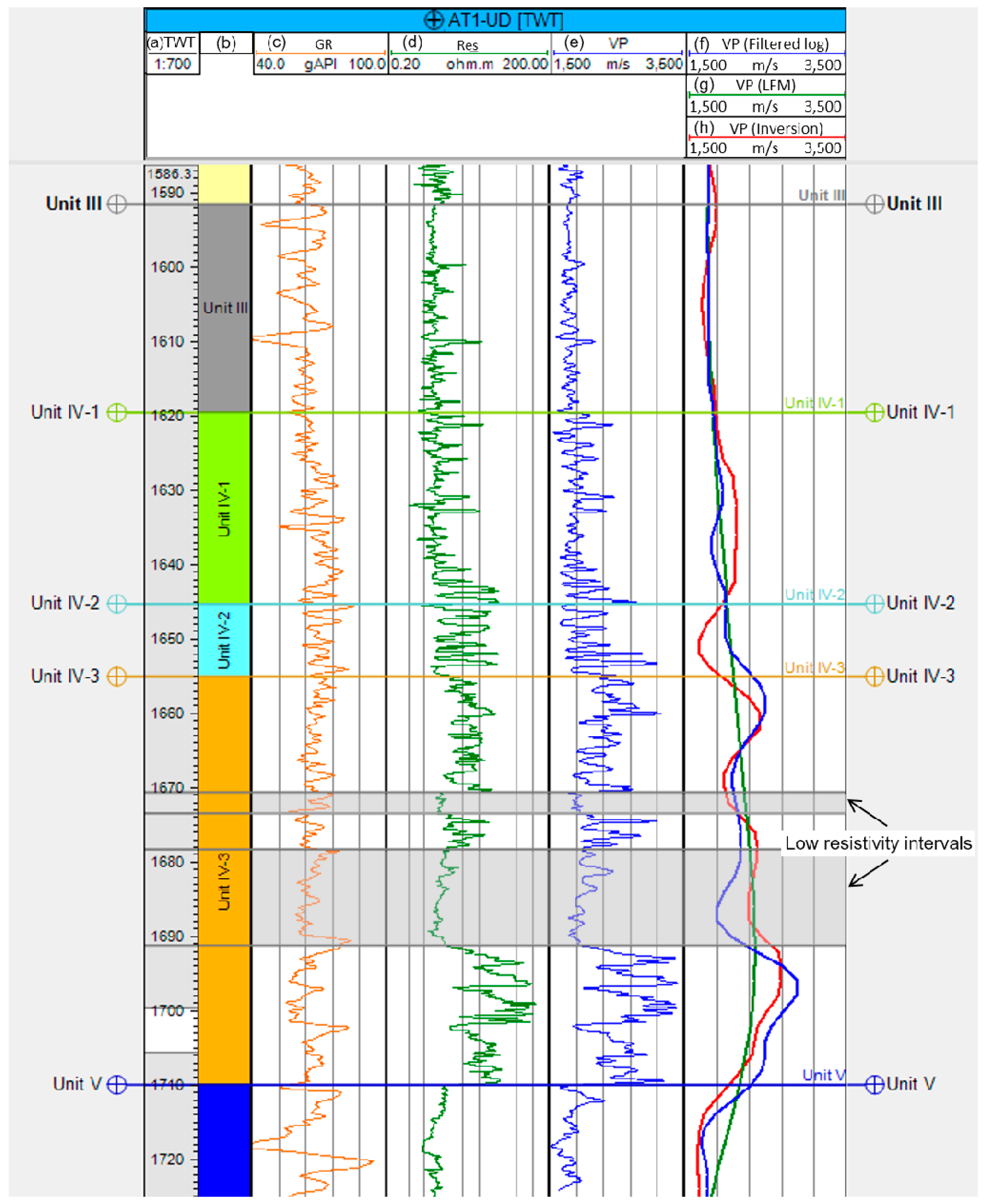
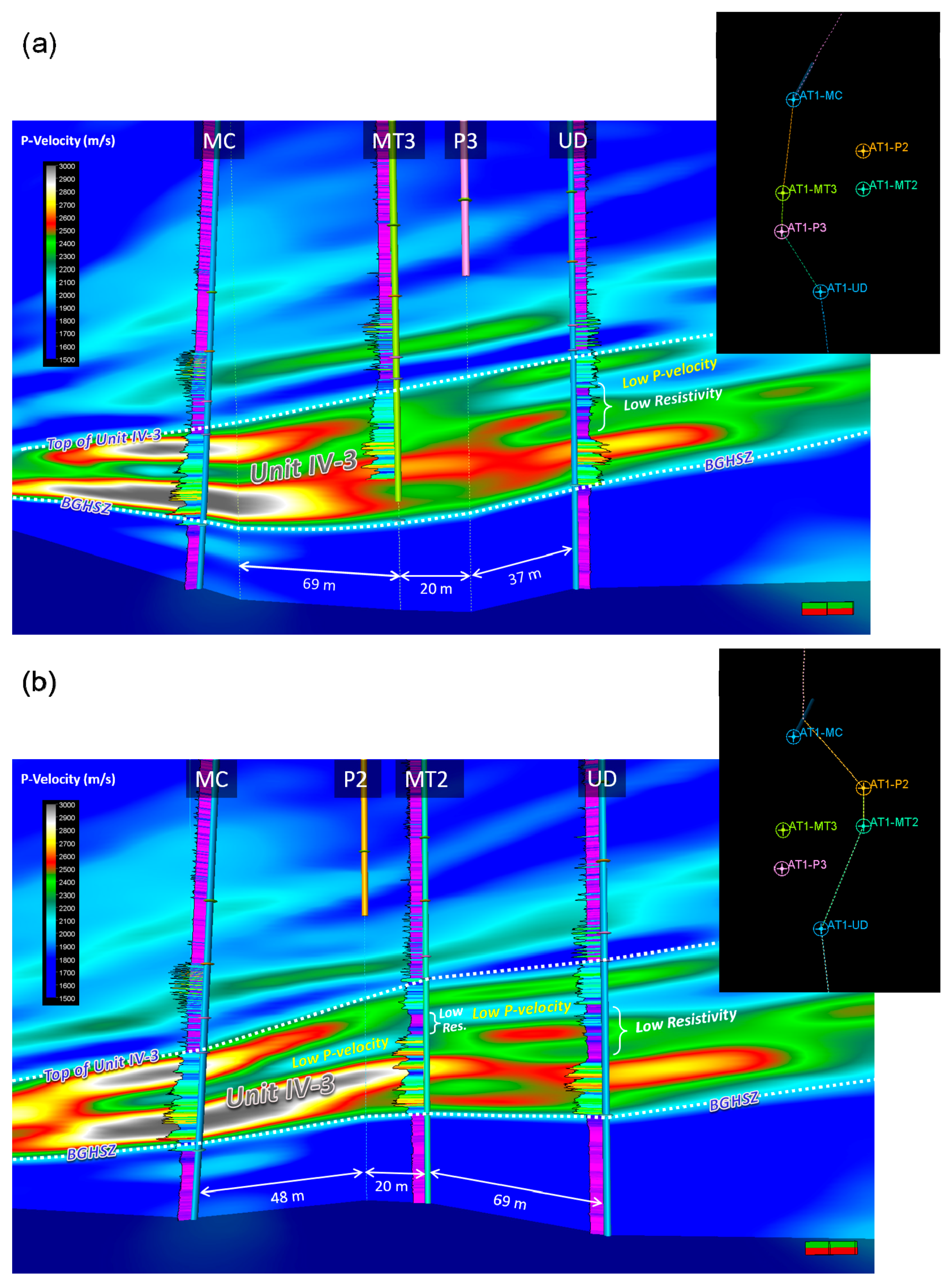

© 2017 by the authors. Licensee MDPI, Basel, Switzerland. This article is an open access article distributed under the terms and conditions of the Creative Commons Attribution (CC BY) license (http://creativecommons.org/licenses/by/4.0/).
Share and Cite
Tamaki, M.; Fujii, T.; Suzuki, K. Characterization and Prediction of the Gas Hydrate Reservoir at the Second Offshore Gas Production Test Site in the Eastern Nankai Trough, Japan. Energies 2017, 10, 1678. https://doi.org/10.3390/en10101678
Tamaki M, Fujii T, Suzuki K. Characterization and Prediction of the Gas Hydrate Reservoir at the Second Offshore Gas Production Test Site in the Eastern Nankai Trough, Japan. Energies. 2017; 10(10):1678. https://doi.org/10.3390/en10101678
Chicago/Turabian StyleTamaki, Machiko, Tetsuya Fujii, and Kiyofumi Suzuki. 2017. "Characterization and Prediction of the Gas Hydrate Reservoir at the Second Offshore Gas Production Test Site in the Eastern Nankai Trough, Japan" Energies 10, no. 10: 1678. https://doi.org/10.3390/en10101678



